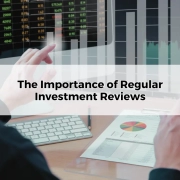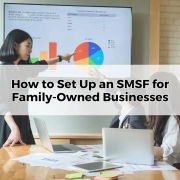How to avoid death tax on superannuation?
Table of Contents
ToggleImagine this: you’ve diligently built a healthy superannuation nest egg, dreaming of a comfortable retirement or leaving a legacy for loved ones. But what if a hidden tax bomb lurks within your super, waiting to detonate upon your passing? That’s the harsh reality of death tax on superannuation in Australia.
For many Australians, super becomes their largest asset, but it’s also subject to complex tax rules at death. Depending on who inherits your super, a hefty chunk could be siphoned off by the Australian Tax Office (ATO). This can leave your beneficiaries with less than you intended, potentially derailing their financial plans and dreams.
Ignoring this ticking time bomb is a gamble you can’t afford to take. Understanding your options and taking proactive steps can make a world of difference. In this blog post, we’ll demystify the death tax on super, explore proven strategies to minimise its impact, and empower you to protect your hard-earned super for the ones you love.
Strategies to Minimise Death Tax
Now that you’re aware of the looming death tax threat, let’s equip you with the tools to dismantle it. We’ll explore four key strategies to minimise the tax bite on your super:
Master the Beneficiary Nomination Game
Think of this as your secret weapon: a Binding Death Nomination (BDN). It allows you to nominate who receives your super and, more importantly, how it’s taxed. Choose wisely, because different beneficiaries come with different tax implications:
- Tax-free haven: Spouse, children under 18, and certain dependents enjoy a tax-free paradise. Their pockets stay untouched by the taxman.
- Adult children: tax tightrope walk: Here’s where things get tricky. Adult children face a 17% or 32% tax depending on their age and your super’s tax components. Choose wisely!
The Re-contribution Shuffle
Imagine a magic trick: transforming taxable super into tax-free gold. That’s the magic of the superannuation re-contribution strategy. You withdraw eligible super, pay any applicable taxes, then re-contribute it as non-concessional contributions. Presto! Tax-free death benefit for your loved ones.
But remember, this trick has some rules: eligibility, contribution limits, and potential tax implications. Seek professional advice to ensure you don’t trip over the fine print.
Trusty Shield
Think of this as a fortress protecting your super from the taxman’s siege. A superannuation testamentary trust receives your super after death, then distributes it to beneficiaries according to your wishes, often with significant tax advantages like tax-free distributions and asset protection.
However, building this fortress isn’t cheap. Legal and administrative costs can be hefty. So, consider this option if you have a sizable super balance and want ultimate control and flexibility.
Drawing Down Super Before Death
This is the ultimate “preemptive strike.” Under specific conditions like retirement or terminal illness, you can withdraw super tax-free. This reduces your super balance, minimising the potential death tax impact. But be careful! Early withdrawal can have its own tax implications and limit your retirement nest egg.
Remember, these strategies are powerful tools, but they’re not one-size-fits-all. Each comes with its own nuances and potential pitfalls. Consulting a qualified financial advisor like ourselves is crucial to navigating this complex landscape and crafting a personalised plan to disarm your super’s death tax bomb.
Conclusion
So, you’ve now got an arsenal of strategies to combat the super death tax and secure your financial legacy. But remember, knowledge is power only when acted upon. Don’t let this information gather dust in the corners of your mind. Take the next step and turn it into action.
Remember, every step you take today brings you closer to a future where your super truly fulfills its purpose: showering your loved ones with financial security and fulfilling their dreams. Don’t let the taxman become an unwelcome guest at your legacy party. Take control, choose your beneficiaries wisely, and utilise the strategies we’ve shared.









